Beamdog D&D Enhanced Edition Console Releases Interview
With Beamdog bringing its Enhanced Editions of classic Dungeon & Dragons RPGs Baldur’s Gate, Baldur’s Gate II, Planescape: Torment, and Icewind Dale to consoles this month — Neverwinter Nights following in December — RPGamer was given the opportunity to discuss the releases. Johnathan Stringer was able to interview Beamdog co-owners Cameron Tofer and Trent Oster, and PR and Marketing Lead Sarah Dawson about the creation of the console versions.
Johnathan Stringer (RPGamer): You have all these Enhanced Editions coming to console after creating them already for PC and tablets. What kinds of concessions and obstacles did you go through to get them to work on consoles, specifically the user interface?
Cameron Tofer (Beamdog): There were a lot of changes made. The team really had to take a step back; from what they described to me, it was a flattening of the hierarchy of the menus and whatnot. There were some deep dives into the code and ripping apart and reimagining of the UI. From our side, that is the area we can play with the most without disrupting the core feel and emotion of the product.
Sarah Dawson (Beamdog): I was playing the games when demoing them at the Edmonton Expo, and I think some of the changes that work really well are snapping cursors and object highlighting. As we don’t have the finesse of the point-and-click mouse control, those make the console versions control really well. The change of moving the party with the analogue stick rather than point-and-click is also one that had to happen but has translated extremely nicely.
JS: Would you say the console versions are closer to the tablet versions or more akin to the interface on the PC?
SD: I think they’re their own beast. It’s just my opinion from playing the different versions; we don’t have touchscreen in the games for Switch, but it’s translated for console analogue play with things like the snapping cursors and object highlighting I just mentioned.
JS: Are there any features in these games that were added for the console releases, anything that didn’t make it in or didn’t quite work, or are these exactly the same content-wise that you’ll get on the other platforms?
Trent Oster (Beamdog): I think from the player’s point of view, you’re going to get the same story; everything’s preserved and there isn’t anything lost as far as the experience goes. There are going to be small details that are different in terms of your interface and how you approach things, but everything contest-wise has been preserved.
SD: One of the major improvements is to the pathfinding. I think players will be excited for how that works in the console versions.
TO: Part of that was to try and make the entire party pathfind along with the one controlled character. We really had to go and improve the logic everywhere for the characters just so they could follow, so it ended up being a broad pass over the entire pathfinding aspect.
JS: So in the console releases you have the main character and the other party members follow you around now?
TO: That’s correct, but you can also pop over and control each one individually.
JS: So if you think you’re about to get into a fight, you can still pause the game and manually move each character into a better pre-fight position?
TO: Exactly. You can prepare for a tactical encounter by leaping to one character (or group) and taking them over there, then leap to another to go elsewhere. You can also jump into a tactical mode where you can select a couple of characters, then click on the ground and have them go over there. We’ve really tried to support every potential mode of using this, but what I’ve found with time playing it, you start to gravitate toward driving characters around more, just because it’s more intuitive and makes more sense.
JS: With these consoles releases I’m guessing the goal is to try and introduce these classic games to a whole new audience, those that didn’t grow up with them. Has the reception been good with the younger crowd, or is the appeal more from those who played it before but are looking forward to playing them in a new way?
TO: I think it is a mixed bag. When we were at PAX East with them, we had a lot of people who came along who had played the games previously and were looking forward to playing them again in a new format. But we also had plenty of people who had read or heard about the games and were excited to experience them for the first time.
SD: It’s also wonderful timing that these are coming out on the heels of Larian’s Baldur’s Gate III announcement, with it getting people interested in the franchise and wanting to see where it began. We’re offering people a chance to play the first two classics right before the release of the third one.
JS: I’ve asked this before in an interview with Trent, but what about the one so far left out, Icewind Dale II?
TO: We never did an Enhanced Edition of Icewind Dale II. We looked into it, but the changes were pretty profound and we never found the source code for it. It’s just too expensive to try and reverse-engineer it so we’ve just never really approached it at all.
JS: Any potential for Neverwinter Nights 2: Enhanced Edition?
TO: Neverwinter Nights 2 is a pretty significant branch from the original Neverwinter code as well, especially on the toolkit side. Again, we’re not that familiar with it and haven’t really dug into it so I think for now we’re better concentrating on the first game as at least I have such an intimate relationship with it and deep knowledge of everything that’s there. I also personally felt that the Neverwinter 1 toolset was that much more accessible and easier to create content for, so I felt more comfortable personally, and as a company, jumping into that.
JS: A big part of what made Neverwinter Nights such a long-standing, much loved game was the toolset; you could do your own DM session, or you could create you own world. How is that going to be in the console versions, is it going to be an option, or is it mostly going to be playing the main modules and expansions?
TO: We’ve made it really easy by default to get access to the main stuff, and then we’ll also have some of the user-created content available. Initially, we’re going to try and curate a little list of it and then we’re going to see how it plays out.
SD: I can say that at launch the DM tools won’t be available for Neverwinter Nights: Enhanced Edition on console.
JS: So it’s something that might be available in future?
TO: It’s one of those things where we’re going to play it by ear and see how it does. I think we really view the console as for the player who can jump in a play the game, while the PC is more geared for the content creation and oversight side of it, especially with the DM client because it is so configurable and so much of what you do is typing in or scripting stuff, which is really hard to do on console.
JS: Which Neverwinter Nights expansions have been given the Enhanced Edition treatment on console?
SD: All of the ones that were released for PC as of the start of 2019 are going to be included as free downloads with the purchase of the game. The ones that will be “on the disk” are the core game, plus Hordes of the Underdark and Shadows of Undrentide. Everything else will be available as free downloads.
JS: Are there any future plans to add more to the other games or is this mostly just reserved for Neverwinter Nights?
CT: We have updates — not exciting updates — coming to mobile and desktop. Things like the 32-bit stuff is getting retired so we’re going through and doing service patches and things like that. As far as major new exciting stuff goes, we haven’t announced anything at this time.
JS: Let’s talk about about some of the things that Beamdog has added, such as The Black Pits for Baldur’s Gate. Can you give a quick overview of how it connects and how did that idea come about?
TO: The Black Pits is totally separate. We think that the Baldur’s Gate tactical combat system was a lot of fun, but the only way to participate in it was to go through the entire story. The Black Pits was really this concept of “what if we created this mode that you could just fight through and see how fun different tactical battles can be?”
At the same time, it also turned into a way to try different character ideas and builds, because you level up quickly between the fights. You can try different party combos, different skills, and different builds. It’s a really good way to get a broad variety of the tactical options in the game. Just from my time messing around with it I came up with some new strategies that are pretty awesome.
JS: Baldur’s Gate: Enhanced Edition received plenty of additions with the three new party members that carry through to Siege of Dragonspear and the second game. Is there anything similar for Planescape: Torment and Icewind Dale?
TO: Planescape: Torment and Icewind Dale are games we really wanted to keep exactly the same, as they were essentially developed by another company in Obsidian Entertainment rather than Black Isle Studio. We didn’t feel quite the same level of ownership with those. Along with the ownership we feel over Baldur’s Gate, there is also insider knowledge of how things were implemented, whereas with Icewind Dale and Planescape: Torment there is a little less comfort in how everything was put together. There was definitely some education for us when we dug into the code base.
JS: With these games being on console, have you approached playing the game differently with a controller as opposed to mouse-and-keyboard, or do they feel like the classic games?
TO: I think we’re so unqualified through having put so many hundreds of hours into the games that we just can’t separate it!
CT: We did some early prototyping before we even knew we wanted to attempt console versions. We put a couple of people on it, and when we got the controller and first starting using it to push the character around we were like “yeah, this is it, this feels good.” After that we were confident we could take it there, but Trent is right, we’ve just put too much time into them.
JS: Do you feel that when playing with the console controls you take a quicker approach to fighting in battles, or do you see the players still sitting back and strategically moving the characters around?
TO: I think you roll into the easy fights a bit quicker, and then you get destroyed when you roll into a hard fight. But then you rethink it, come back, and definitely go a little slower for a while after that before building up to that comfort level again.
SD: You can experiment with it and your own game style too, as in the option menus you can choose whether you want it to be all real-time, all turn-based pause system. All the options available on PC are in the settings menu on console as well.
JS: Did the consoles assist in terms of game resolutions? How much of a challenge was it getting everything to fit and still be able to read all of the dialogue, etc.?
TO: It wasn’t really that bad, because we’d already been through the horrendous fight to get it working on Android screens. Android has every screen aspect ratio available to it that you could imagine. After going through that and having all of those screen resolutions, it was nice to see just a couple of screen sizes to support.
CT: The readability of the font worked really well, so we’re quite happy with that. It’s been a pet project of mine getting those fonts to work, at least it was those years ago when we initially went to the Enhanced Editions on mobile. It carried over to the consoles pretty well.
JS: Besides the obvious control and UI changes, what were the other challenges that you encountered putting the games on consoles?
CT: Even the size on the disk was an issue, cramming them down into the necessary size. Networking was also a challenge. Really, it’s all been a challenge. The team has done a heroic effort. It’s all custom code, there’s millions of lines of it with millions of lines of text. It’s all been a massive endeavor and there are so many different parts and ways of playing the games from every console. It’s a challenge just keeping track of everything.
JS: Which console was the most difficult to port over to?
CT: It depends on which aspect. For example, the Switch was really easy when it came to the graphics but then it was more difficult for other aspects. Each one had its own issues, but for the most part it’s at least always been progressing. The Switch being very similar to the PC was quite nice. I suppose if we had fully embraced Windows it might have been easier on Xbox, but as we were coming from MacOS, Linux, and Windows, we were all OpenGL so it was more a straight fit on Switch. I guess Nintendo always has high standards when it comes to certifications and that’s always a challenge with them, which is great as it shows they care about the minor details of how the game interacts with the system, but as technology goes that was the easiest one.
JS: What about in terms of the individual games? With Neverwinter Nights being the most recent and largest of the group did the majority of effort need to go into that game?
CT: Yeah, that’s what we thought before we got into it. We’ve put more effort into Neverwinter’s graphics and improving them than with the others, which were more of direct ports in terms of graphics and got more attention on the controls and interface. Whereas with Neverwinter, the controls and interface were more adaptable to the controller, so we decided to spend more time on the graphics.
JS: I would’ve said that Neverwinter Nights needed that the most. The other ones have that more timeless look to them while Neverwinter is in that awkward 3D look that probably didn’t age very well. I remember talking, I think it was with you Trent, about some Baldur’s Gate resources that were lost so you couldn’t do exactly what you wanted in terms of graphical updates. Did you have everything you need to improve the graphics for Neverwinter Nights?
TO: We had everything in a (chuckles) partly broken state on Neverwinter. With the export pipeline to pull assets out of the 3D package, the plugins didn’t actually work originally and we had to go in and twiddle with them to get them to work. About half of the content was there, about half was in various states of corrupt or not available.
CT: We had graphic features that would expose original bugs that were never visible. It would show art that was made in an odd way that didn’t matter originally, but now it does matter.
JS: With the Neverwinter Nights expansions, is it all the original expansions or is there new content?
CT: Darkness over Daggerford and Tyrants of the Moonsea are new additions. Our friends at Ossian Studios picked them up again, added new content, and finished them off. They are pretty significant and definitely worth it for fans looking for new Neverwinter content.
JS: Do you think players will have any difficulty adjusting to the older Dungeons & Dragons rules or has it so far been a pretty easy transition for the most part?
SD: I think, as with any long form RPG, there’s going to be a bit of a learning curve and certainly these games have a lot of rules. But I definitely think the console versions are more accessible and intuitive to jump in to.
JS: One of the complaints I’ve heard before is that with those who aren’t used to the older D&D ruleset, they don’t know what many of the numbers and stats mean. Are there explanations on the console versions that aren’t the thick manuals of the PC version to help them with that?
CT: I would pose does anyone understand those? Having looked at the code… (Laughs) The question is do you need to go that deep to fully enjoy it? When you’re min-maxing and have a particular goal in mind then, yeah, you want to dig deep, but there’s a lot you can enjoy without going crazy about it. We’ve also included more difficulty settings so it doesn’t have to pose a problem.
TO: Story mode really makes it so you can jump in and enjoy the story and not worry about the combat.
JS: There have been times when I’ve gone “OK, what does this spell really do?” and then had to go and trial-and-error and play with it. I feel some modern gamers would be frustrated with that aspect, while those of us who have been playing these games for a while would consider that a fun feature. Is there more of a manual in the game explaining it, or is it more of a “this is what it is”?
TO: I think it’s somewhere right in the middle. We have a manual that goes with it, but at the same time we’re not going to be able to go into the same depth describing every spell.
CT: I was just thinking about some of the tickets that have gone through the system and the resulting fixes that we’ve made. There were blatant errors to the descriptions where we’ve looked and the spells just do not do that. We’ve made these fixes and some of these are things that have been there since day one. I think that’s just part of the excitement and the mystery; there is no one single source of truth with these wonderful little things and it’s best to just go with it. But we have put in extensive effort to have the descriptions match the effects, that’s for sure.
JS: Is there anything else on the console releases that I haven’t asked about that you think fans would be interested in knowing?
TO: I think you hit most of the elements. The big thing is that we’re excited because it’s a chance for those who haven’t played the games to get into them. The consoles make it more accessible and more fun to drive your character around. The other side of the excitement is that those people who played them before can try them out on new platforms and poke around.
SD: Each pack just has so much content, and we’re really excited working with Skybound Games to put retail versions out there so folks can get it physically or digitally.
RPGamer would like to extend our deepest thanks to Cameron Tofer, Trent Oster and Sarah Dawson for giving us their time, as well as to Tony Rivera from Sandbox Strategies for setting up the interview. Four of the games are available on console now, with the Baldur’s Gate: Enhanced Edition Pack and the Planescape: Torment / Icewind Dale: Enhanced Edition Pack both available on PlayStation 4, Xbox One, and Nintendo Switch now. Neverwinter Nights: Enhanced Edition will also be released for the same platforms in North America on December 3, 2019.
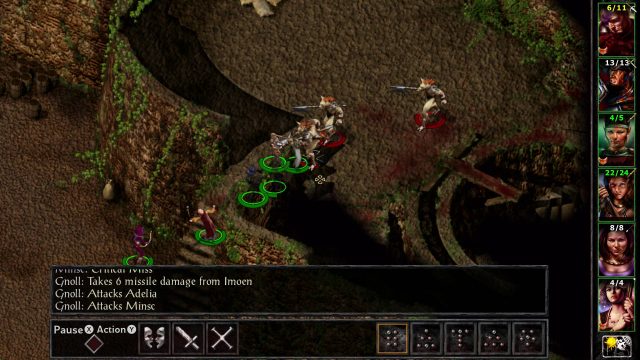
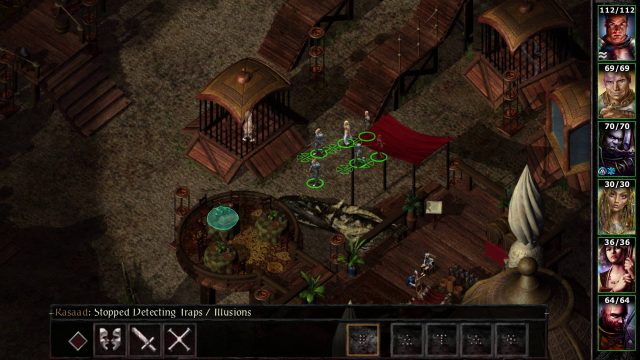
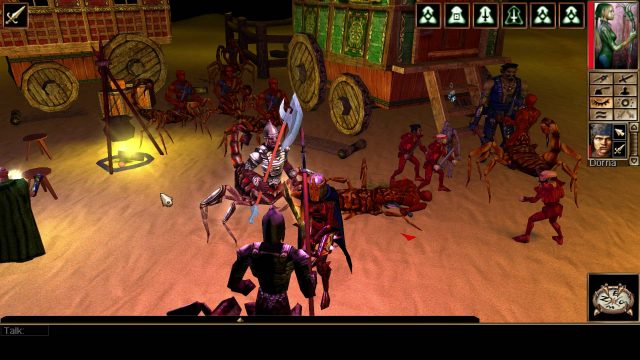
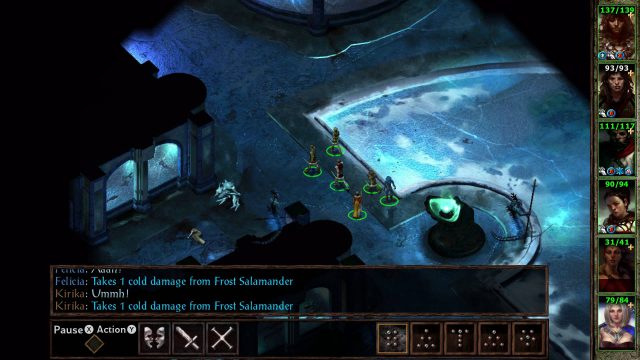
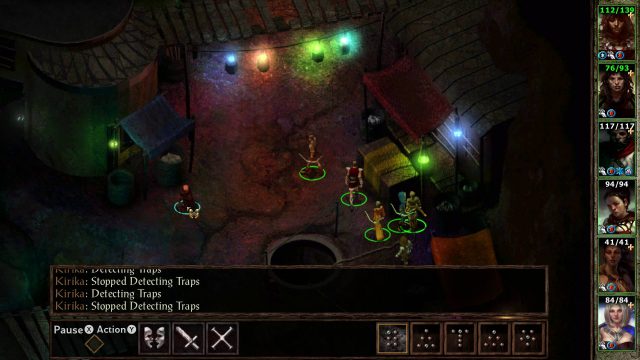
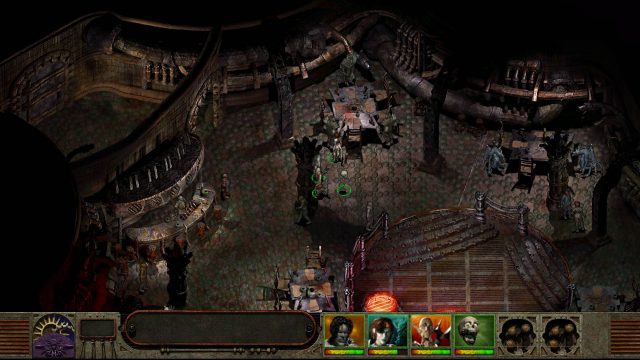
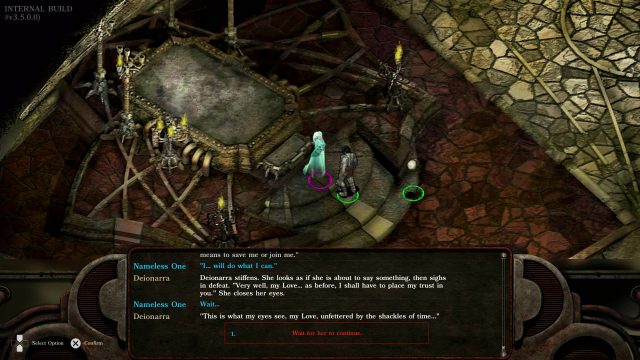

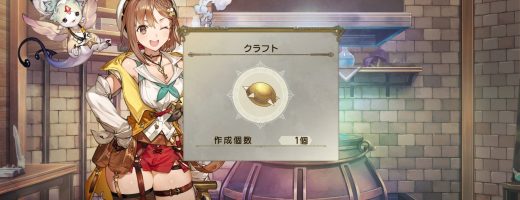




Recent Comments